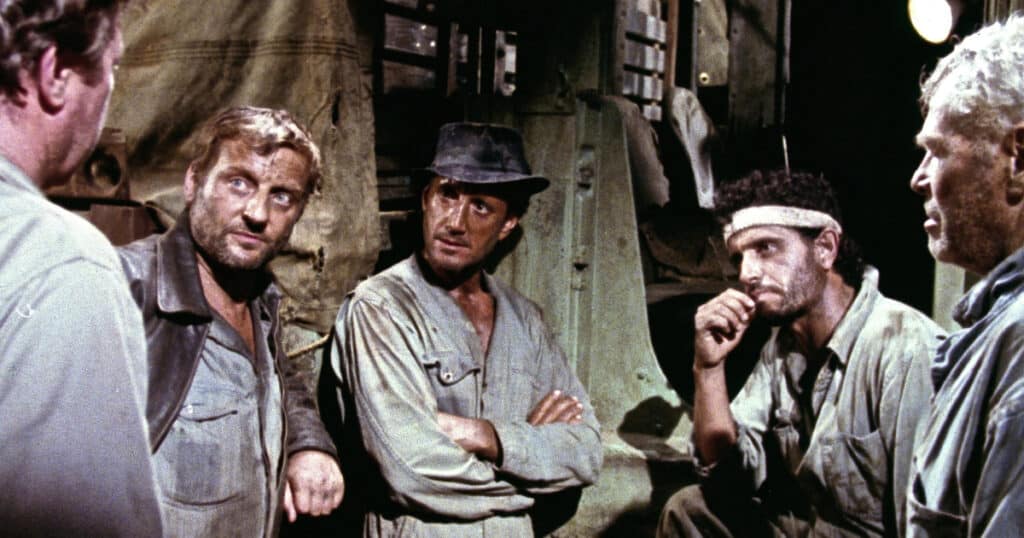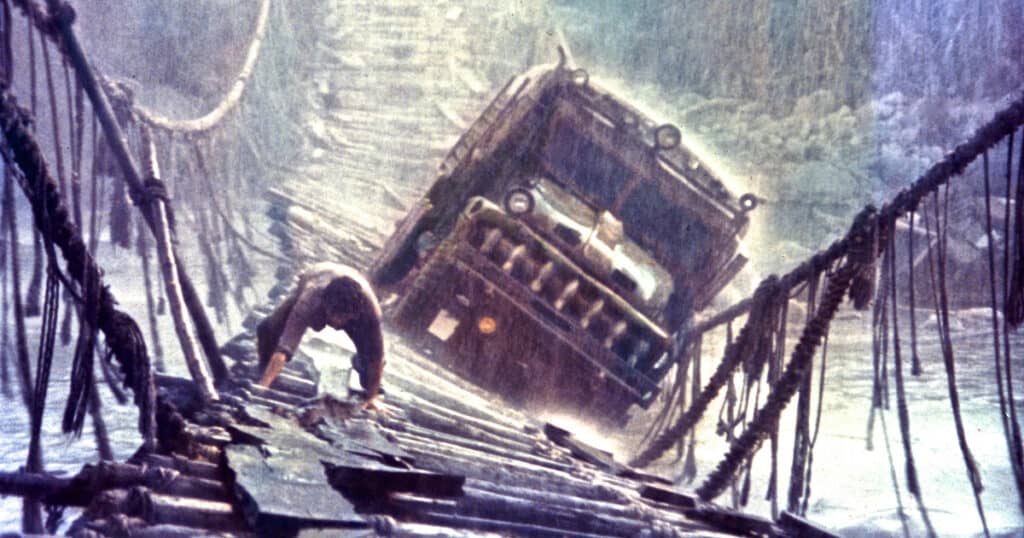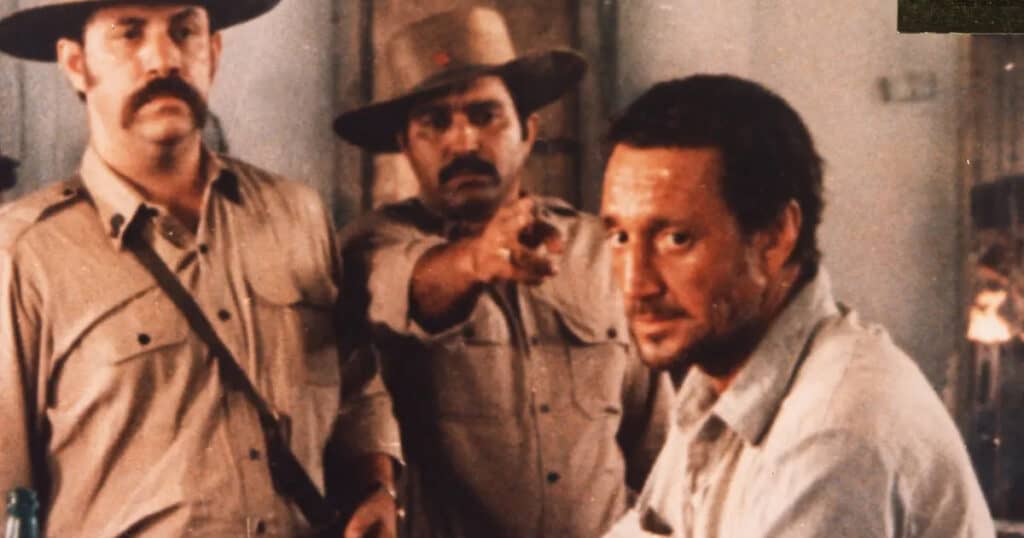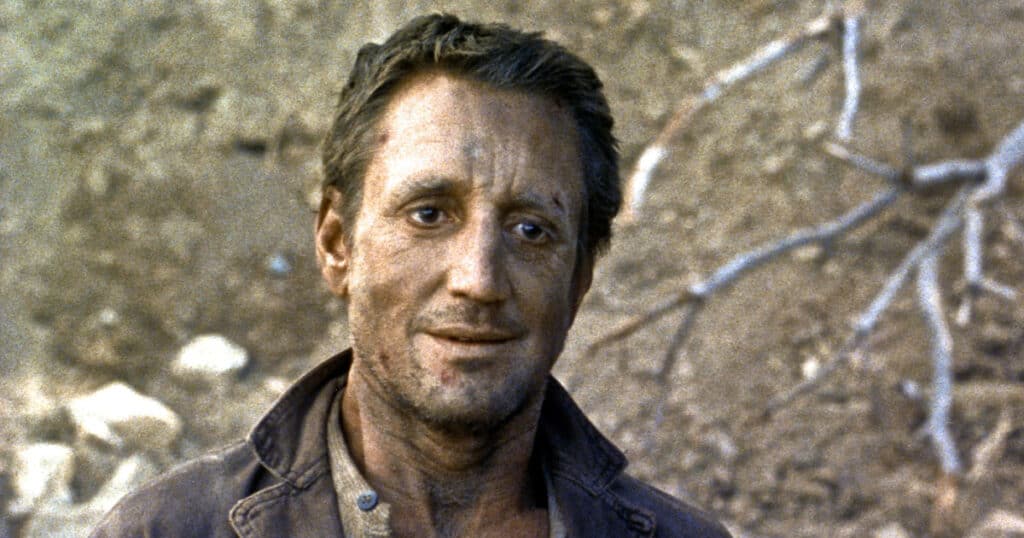Entertainment - Media News Watch originally published at Entertainment - Media News Watch
The 1970s were probably the last decade when the film industry had many honest-to-goodness auteurs. Director’s who make movies according to their own terms, without compromise. Not just those making small indie art films but also those in charge of large projects with backing from major studios. Filmmakers such as Martin Scorsese and Francis Ford Coppola were able to mature during this time and create movies that would last for decades. William Friedkin is another name that you can add to this list. He made two instant classics during that time, and one misunderstood masterwork.
The French Connection is a classic. In a period of three years Friedkin produced two movies that are both contenders for Best Horror Movie Ever and Best Cop Film Ever… You can all debate this in the comments… The Exorcist was one of the most successful box office films of all time, and it won two Oscars. Friedkin became a god… at least in his mind. Coming from two highly regarded and successful movies can make any director feel invincible. Friedkin, by his own admission, believed his own hype. When it came time to follow those two movies, Friedkin would ultimately decide on SORCERER, a fairly low-budget suspense film that he thought would be easy enough to squeeze in before delving into a much larger project. The fates had a different plan, turning Friedkin’s low-budget film into a costly and exhausting project. Buckle up because the road ahead is very rocky; Hold on tight and find out WTF Happened to this movie!Sorcerer was based on the 1950 novel “The Wages of Fear” by French author George Arnaud, which was subsequently turned into a 1952 movie of the same name by legendary director Henri-Georges Clouzot. Both tell the story of four men who are forced to drive trucks full of unstable explosives across dangerous terrain to stop an oilfield fire. One wrong turn, one bump, the nitroglycerine is too much rattled, and everyone dies. Friedkin, who was a fan of the book and movie, wanted to make a grittier, more cynical version than Clouzot. Friedkin has always insisted that it is not a remake, but rather a new adaptation of the book. He still went to Clouzot for his blessing, and was granted.
Friedkin originally intended his version as a relatively small movie that he could produce quickly and cheaply before embarking on the sci-fi epic “The Devil’s Triangle,” which is about the legendary Bermuda Triangle. It’s safe to say that things didn’t work out as planned, and “The Devil’s Triangle,” a sci-fi epic about the Bermuda Triangle, never happened. This was mainly because Steven Spielberg’s Close encounters of the third kind, allegedly containing many similar concepts, was released. Walon Green wrote the script for Walon Friedkin’s Wages of Fear over a period of four months. Friedkin wanted to make a movie that would be remembered as a major part of Friedkin’s legacy. Heading to the Dominican Republic, where the weather and conditions would turn out to be wholly unpredictable, Friedkin’s $2.5 million movie eventually expanded to $12 million before finally consuming approximately $22 million – needless to say, a very expensive project in 1976, even more than his peer Steven Spielberg ultimately spent on
Close
Encounters. In fact, the budget eventually became so bloated that it took two studios to co-produce it, Universal and Paramount.
Friedkin was interested in making “Wages of Fear” his own in some key ways; the most dramatic change being the four lead characters, depicted as decent men in Clozot’s movie but who Friedkin sought to make highly flawed, morally corrupt individuals – one character literally describes our protagonist as “a real piece of shit”. The film’s first scene shows that the characters are murderers and thieves, but Friedkin wanted to make them morally corrupt. One character calls our protagonist “a real piece of shit”. Friedkin, both then and now has never been interested by traditional movie heroes. Furthermore, he saw Sorcerer as a metaphor for the world at large, in which strangers who don’t like each other have to find a way to work together; otherwise, everything will explode. The theme is timeless, for sure. One working title was “Ballbreaker” and another, appropriately “Dynamite.” However, while doing research in South America Friedkin saw trucks that had names crudely painted onto the doors. Friedkin was inspired by the names of two such vehicles, “Sorcerer” (the first) and “Lazarus” (the second). Friedkin used the title as a metaphor, stating that a “sorcerer is an evil wizard and in this instance, the evil magician is fate”, furthering the idea that the men’s destiny was completely out of their control. Friedkin imagined Steve McQueen as Jackie Scanlon, the New Jersey crook hiding in South America. McQueen loved the script, and wanted to make it. However, he had recently married Ali MacGraw, and did not want to leave her behind in the States for three months while he shot the movie. Friedkin laughed at McQueen’s request to write a part for MacGraw, so that she could join him in the Dominican Republic. McQueen failed to convince MacGraw to join as an associate producer and the actor left the film. The role was offered to Clint Eastwood and Gene Hackman, but in the end, it went to Roy Schieder. Schieder had previously worked with Friedkin at
The French Connection. Scheider and Friedkin’s relationship was strained because Scheider wanted to play Father Karras, but was denied the role. Still, he was coming off Spielberg’s blockbuster Jaws and seemed like a bankable leading man to that film’s studio, Universal. The other three primary actors were not household names in the U.S., and the studio was concerned the lack of star power would hurt the movie, but Friedkin forged ahead, convinced it wouldn’t matter. He thought people would watch the film because his

was on it. He even suggested to the studio that they change the names of the actors for the release in order to sound more American. This idea never materialized. Standing in for the movie’s remote Colombia setting, most of Sorcerer
was shot in the jungles of the Dominican Republic, where the crew literally had to make their own roads to film the truck-driving scenes. The Dominican Republic jungle was extremely hot and uncomfortable. Many people, including Friedkin, fell ill with dysentery or malaria during the production. Some crew members were sent to America as they were suspected of drug use, which local governments would not tolerate. To avoid prison, they fled back to America and had to replace them.
If the crew was not sick or evading prison time, they would be fired. Friedkin, whose volatile personality earned him the nickname Hurricane Billy, was in full dictator mode in the jungle. He fired people left and right including production managers and teamsters as well as stunt people, and anyone else he felt offended him, even his long-time line producer. Friedkin replaced his first cinematographer Dick Bush during production after he was not satisfied with his work. He got into a fight with Roy Scheider even though they had gotten along well in French Connection. Scheider would later joke he was the only person Friedkin could not fire because he was the leading man, and said the famously-troubled Jaws production was a picnic compared to Sorcerer.
The film’s most incredible scenes, where the nitro trucks must cross a rope bridge over a raging stream on a rickety bridge, presented some significant challenges. The Dominican Republic river was not used because of the drought. The production moved to Mexico where they found a river which looked intimidating. After the bridge was built, the water started to dry up and the river was reduced to a trickle. Maybe the production was cursed. Friedkin had no choice but to fake the river, pumping thousands of gallons into it and using rain machines and hoses in order to create a powerful storm. The bridge was shaken and swayed by hydraulic mechanisms placed underneath to simulate the flimsy quality of the bridge. Trucks were also attached to the bridge to prevent them from slipping. They did fall into river many times. Friedkin was in the cab one time. The actors often drove the trucks or steered them, but they were never seriously injured. The bridge sequences, which lasted about 12 minutes, took around three months to complete. This cost the movie an additional $3 million. Friedkin had to call a disreputable New Yorker to help with the production when they realized that there wasn’t enough explosives to make a significant dent in the massive tree. “Marvin the Torch”, an arsonist, was hired to blow up buildings to collect insurance money. Although he had retired from his questionable profession, he flew to the Dominican Republic with suitcases full of “beauty products”. At the end of the shoot, Marvin detonated the trees, the explosion was spectacular and “the Torch”, was back on the plane a few days later. After the filming was completed – which lasted for somewhere around ten months! – the editing began. According to Friedkin, it went smoothly. The studios were worried, not knowing if they’d just thrown $20 million down a flaming well. Friedkin was called to a meeting after some Universal executives saw an early cut. Friedkin brought Walon Green, his editor Bud Smith, and a writer to the meeting. He instructed them to stare blankly as the suits read their notes but not nod or agree. Friedkin ordered a bottle and began drinking it straight from the bottle, falling to the floor. The goal was to confuse the executives enough that they would leave them alone. This is exactly what happened. Friedkin had final cut on Sorcerer, and was intent on crafting the masterpiece he had pictured from the start. Friedkin hired Tangerine Dream to score the film
, a German electronic band he had seen perform in Germany years before. Friedkin was mesmerized with their music and asked them if they would be interested in scoring his film. He eventually sent them the script for Sorcerer and wanted them to write the score based only on the pages; in fact, they finished the score and sent him the tapes while he was still shooting the film. In an unusual creative decision, Friedkin and his editor eventually cut the movie to match the eerie and surreal score.
Sorcerer was released in theaters in June 1977; the studios stood by the movie and rolled it out with fanfare. Friedkin’s gamble was not going to pay off. The reviews were harsh, and the box-office was even more so. This was the summer that Star War, which had been released a month before and was on its way to becoming a cultural phenomenon. The audience wanted to enjoy the fantastical space fantasy created by George Lucas and not be forced to sit in a truck with men who barely spoke. As moviegoers kept returning to see the galactic heroes defeat the oppressive Empire, Friedkin’s band of sweaty criminals was essentially ignored.Some theorized that the title could have been an issue: a movie called Sorcerer from the director of

The Exorcist
implied a supernatural picture, but when it became clear that wasn’t the case, audiences were turned off. Aside from Scheider’s presence, the lack of familiar faces among the cast did not help. Whatever the reason,

Sorcerer’s time in theaters was even rougher than the roads traveled in the movie — it couldn’t even compete with Exorcist II: The Heretic,
director John Boorman’s dodgy sequel to Friedkin’s own massive hit. Ultimately Sorcerer only grossed about $9 million that summer and was quickly chased from theaters that wanted more screens for
Star Wars, which ironically cost around half of Sorcerer‘s budget. Money Into Light has an interesting piece about how the movie was brutally cut down in the international version, with it also being renamed

The Wages of Fear.The box office disaster also chased away Friedkin; the director exiled himself to France to lick his wounds while pondering what went wrong. After living like a god for a couple of years, Friedkin came crashing down to Earth. He knew that there were many people who were glad to see him knocked down a notch. And while he’s reached some high notes since, with movies like To Live and Die in L.A., and Killer Joe, Friedkin’s career seemed to take a nitro-blast in the guts after the experience of Sorcerer. Of course, in the years after its theatrical failure, Sorcerer has undergone something of a reevaluation, as time has been very kind to it. Many movie fans now appreciate the suspenseful thriller that is masterfully produced. Friedkin says that it is still the film he is most proud of and was the most difficult to produce. Stephen King, Quentin Tarantino and others rank it as one of the greatest movies ever. It’s constantly being rediscovered. When put together with The French Connection and The Exorcist, Sorcerer
completes a three-movie streak from a man at the very top of his game. Fittingly, the making of Sorcerer was nearly as torturous and harrowing as the events it depicts, and maybe even more fittingly, it was not appreciated for how impressively it accomplished its job. After a very difficult start, it is now recognized as a true jewel; perhaps this was its destiny.
Entertainment - Media News Watch originally published at Entertainment - Media News Watch



